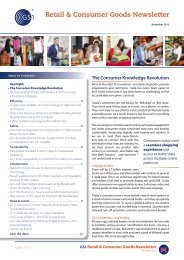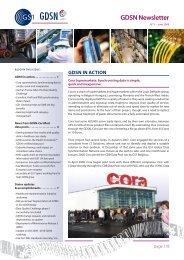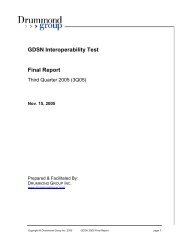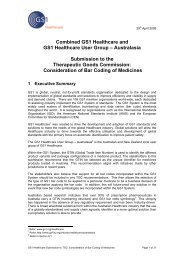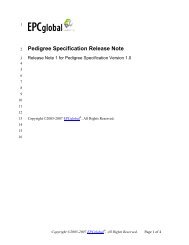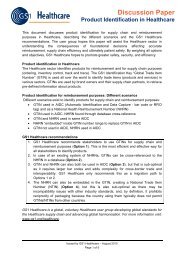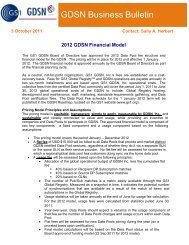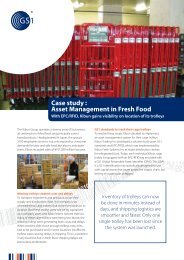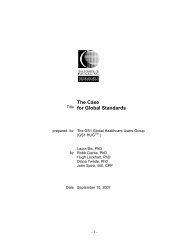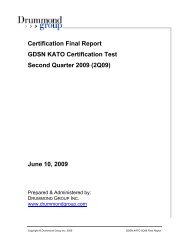Standard International Logistic Label - STILL - GS1
Standard International Logistic Label - STILL - GS1
Standard International Logistic Label - STILL - GS1
Create successful ePaper yourself
Turn your PDF publications into a flip-book with our unique Google optimized e-Paper software.
<strong>GS1</strong> <strong>Logistic</strong> <strong>Label</strong><br />
3 Background<br />
The context is following:<br />
• Globalisation of international trade increases the number of participants in the supply<br />
chain.<br />
• Participants prefer to keep their internal identification and communication solutions,<br />
and if possible use them with their partners.<br />
• In order to ensure the product’s traceability and a good reception the physical flow of<br />
goods should be linked with the electronic flow of information.<br />
• <strong>Logistic</strong> Service Providers plays more and more important role in the operations.<br />
• <strong>Logistic</strong> Service Providers are often forced to maintain the proprietary solutions of the<br />
customers, which creates complexity.<br />
Use of proprietary and non standardised solution causes inefficiencies between the<br />
interfaces of consignors and consignees when the goods move through the supply chain<br />
and necessary links between IT systems have to be maintained to ensure uninterrupted<br />
data flow.<br />
7<br />
Shared identification and communication standards guarantee the reliability of traceability<br />
between independent partners.<br />
The <strong>GS1</strong> global open standards offer some following benefits:<br />
• <strong>Standard</strong>ized and unified way of identification and communication in the supply<br />
chain.<br />
• Widely adopted solution for <strong>Logistic</strong> Service Provider sector: the <strong>GS1</strong> <strong>Logistic</strong> <strong>Label</strong><br />
and the set of EDI communication messages.<br />
• Usage helps <strong>Logistic</strong>s service client, <strong>Logistic</strong> service providers and carriers can meet<br />
their customer’s requirements, comply with legal regulations and to ensure traceability<br />
across the supply chain.<br />
Legal Regulation<br />
Each mode of transport – road, rail, air, maritime uses its own data and information<br />
standards that are often linked to governmental regulations. Legal requirements always<br />
take precedent over voluntary standards.<br />
© <strong>GS1</strong> 2008



